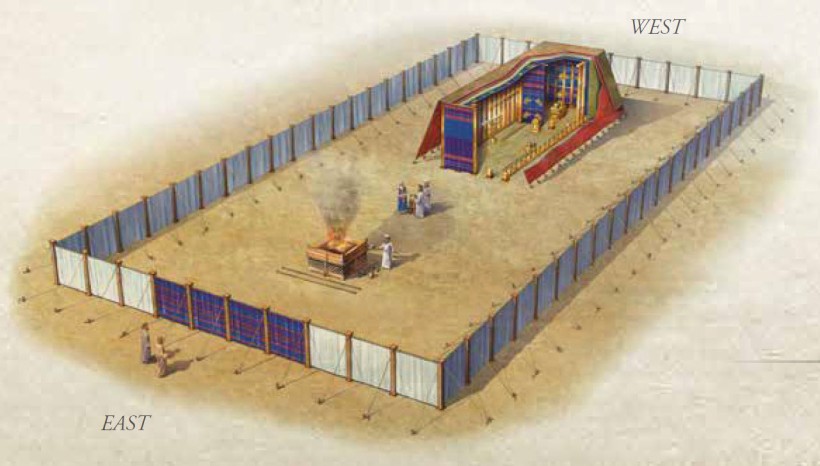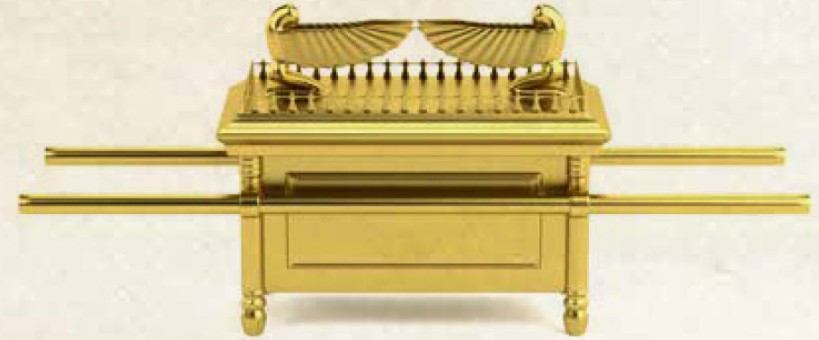This week’s readings were Exodus 35-40, Numbers 7-9, and Leviticus 1-8. All of these passages involve the construction, setup, and proper use of the tabernacle, which was the “tent of meeting” that God ordained to represent his presence among the Israelites. Exodus finishes out with God providing Moses the description of the tabernacle and then Moses collecting the materials and overseeing the construction and setup. God was very specific about the materials and specifications for the tabernacle. In Exodus 25:40, God says,
See that you make [the elements of the tabernacle] after the pattern for them, which is being shown you on the mountain.
Also, in Exodus 26:30, God said,
Then you shall erect the tabernacle according to the plan for it that you were shown on the mountain.
Exodus 35-40
- Sabbath Regulations
- Contributions for the Tabernacle
- Construction of the Tabernacle
- Making the Ark
- Making the Table
- Making the Lampstand
- Making the Altar of Incense
- Making the Altar of Burnt Offering
- Making the Bronze Basin
- Making the Court
- Materials for the Tabernacle
- Making the Priestly Garments
- The Tabernacle Erected
- The Glory of the Lord
Numbers 7-9
- Offerings at the Tabernacle’s Consecration
- The Seven Lamps
- Cleansing of the Levites
- Retirement of the Levites
- The Passover Celebrated
- The Cloud Covering the Tabernacle
Leviticus 1-8
- Laws for Burnt Offerings
- Laws for Grain Offerings
- Laws for Peace Offerings
- The Priests and the Offerings
- Consecration of Aaron and His Sons
I want to take a look at all the prescribed elements of the tabernacle, starting with the perimeter curtains and moving inward. Images below are from the teaching materials of the Lifeway Bible Study curriculum The Gospel Project.

The tabernacle includes all of the elements shown in the picture above. It was designed to be portable, and the descendants of Levi were designated as the people who cared for, assembled/disassembled, carried, and used the various elements as priests for the nation. (Specifically, Aaron’s descendants were designated as the priests). If you recall from last week, the Israelites were instructed to dedicate all their firstborn children to God. The Levites were designated as the substitutes for all the firstborn’s of the rest of the nation. In Numbers 8:17-18, God says
“For all the firstborn among the people of Israel are mine, both of man and of beast. On the day that I struck down all the firstborn in the land of Egypt I consecrated them for myself, and I have taken the Levites instead of all the firstborn among the people of Israel.”
The tabernacle had an outer courtyard which was rectangular in shape. A person would approach on the east side, where the entrance curtain was located, signifying that there is only one appropriate way to approach and fellowship with God, and also signifying a turning away from the rising sun, which is often associated in pagan worship practices. A person would be met by the priests at the gate where the person could offer the gifts and sacrifices he/she has brought.
Inside the courtyard, the priests would offer the various offerings brought by the people. The first element located between the entrance and the tent of meeting was the bronze altar, used for burnt offerings. I’ll discuss the specific sacrificial system next week. The significance of encountering the altar first was to represent the fact that one must be cleansed and forgiven of sins through the substitutionary blood sacrifice of an unblemished animal.
The next item encountered upon approach to the tent was the basin, which held water for cleansing of the priests as they approached God’s house. This served as a reminder of the necessity of cleansing and washing away filth in the presence of God.

Only the priests could enter the actual tent structure, located near the west end of the tabernacle complex. The above diagram shows a cutaway view of the tent. The lampstand (menorah) had seven branches to it and was designed to provide light to the space in front of it. It was to be placed on the south interior side of the tent to provide light for the work of the priests.
The bread table was to be placed on the north interior side of the tent. It was to continually hold bread offerings, representing fellowship with God.
The altar of incense was placed at the west end of the tent, before the curtain (discussed next). The incense to be burned was a specific formula used only for worship of God. It the smoke and fragrance were to represent the prayers of God’s people.
The curtain was intended to separate the outer chamber from the inner (holy of holies) chamber. It represents the complete holiness of God and the fact that He cannot have fellowship with anything less holy than He. Only the high priest could enter through the curtain into the holy of holies, and only on a specified day of Atonement (which I’ll discuss next week). Significantly, this curtain (as found in the 1st century temple) was torn from top to bottom when Jesus died on the cross, signifying that the necessary separation of God from humans was over because of the sufficient sacrifice of Jesus.

The only object found in the holy of holies was the ark of the covenant. It was a box with a gold lid called the mercy seat. The solid gold lid had two cherubims on it, facing down with their wings stretched across the top and touching. Moses would hear the voice of God coming from the space below the wings, which represented the throne room of God. Inside the box were placed the two tablets of the ten commandments, a jar of manna to remind the Israelites of God’s provision, and a section of Aaron’s staff (budded, as we’ll read about later in Numbers.
The big takeaway that I want to emphasize from these passages is that God is to be approached on his terms, not ours. We don’t get to pick and choose which of God’s requirements we want to listen to and which we’ll ignore. We are not saved from our sins by the things we do in terms of following the law, because we are unable to do that completely. Yet it is still God’s expectation of his people to be holy as He is holy.
Next week we’ll be looking at Leviticus 9-26, so I’ll discuss all the Leviticus passages then.
For Further Investigation
- Pictures of a model tabernacle
- Good description (linked in the blog above as well) of the components of the tabernacle
- The Best of the Boring Parts of the Bible from Desiring God
I have a Bible test on the tabernacle tomorrow, so this is helpful.
LikeLike